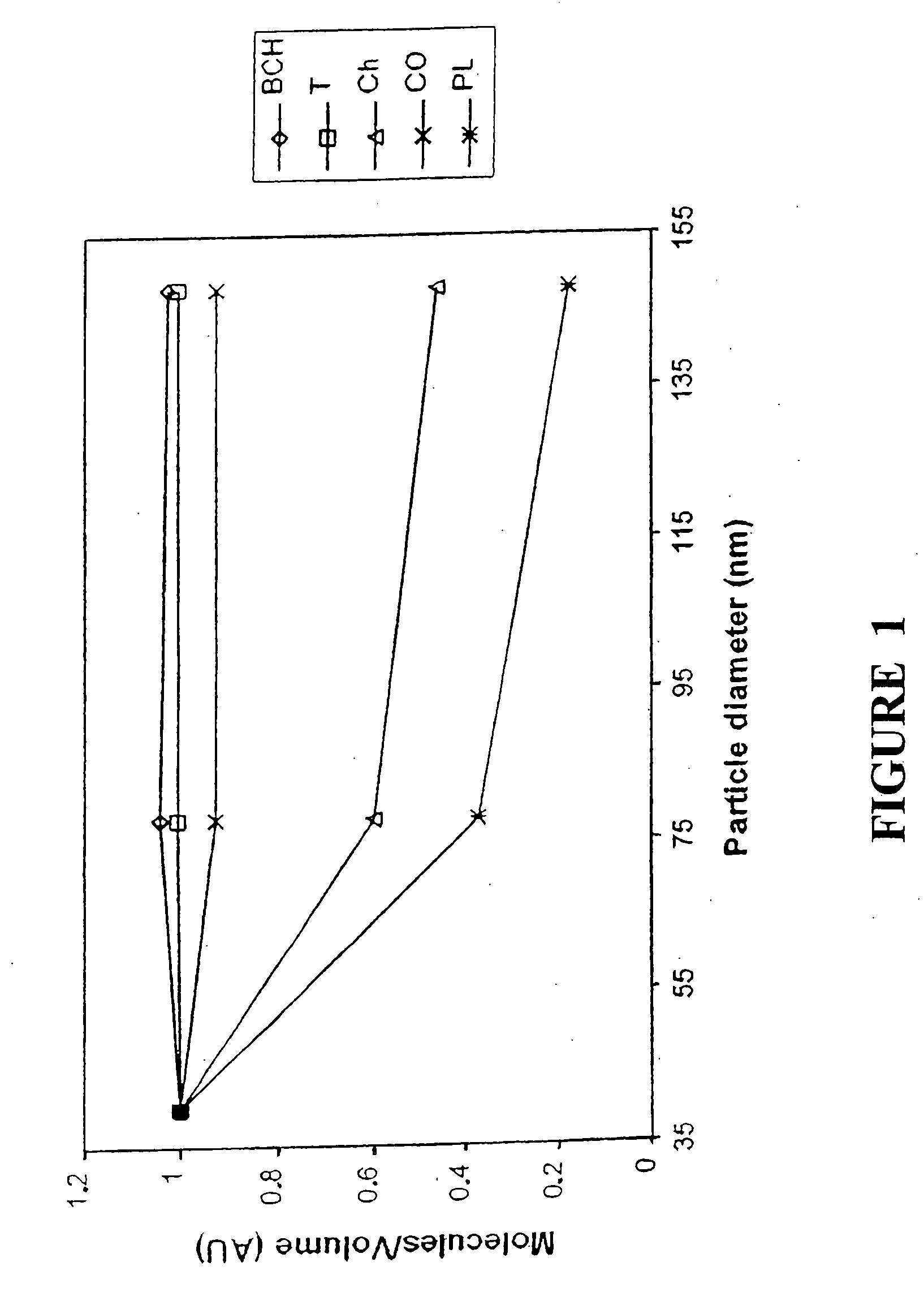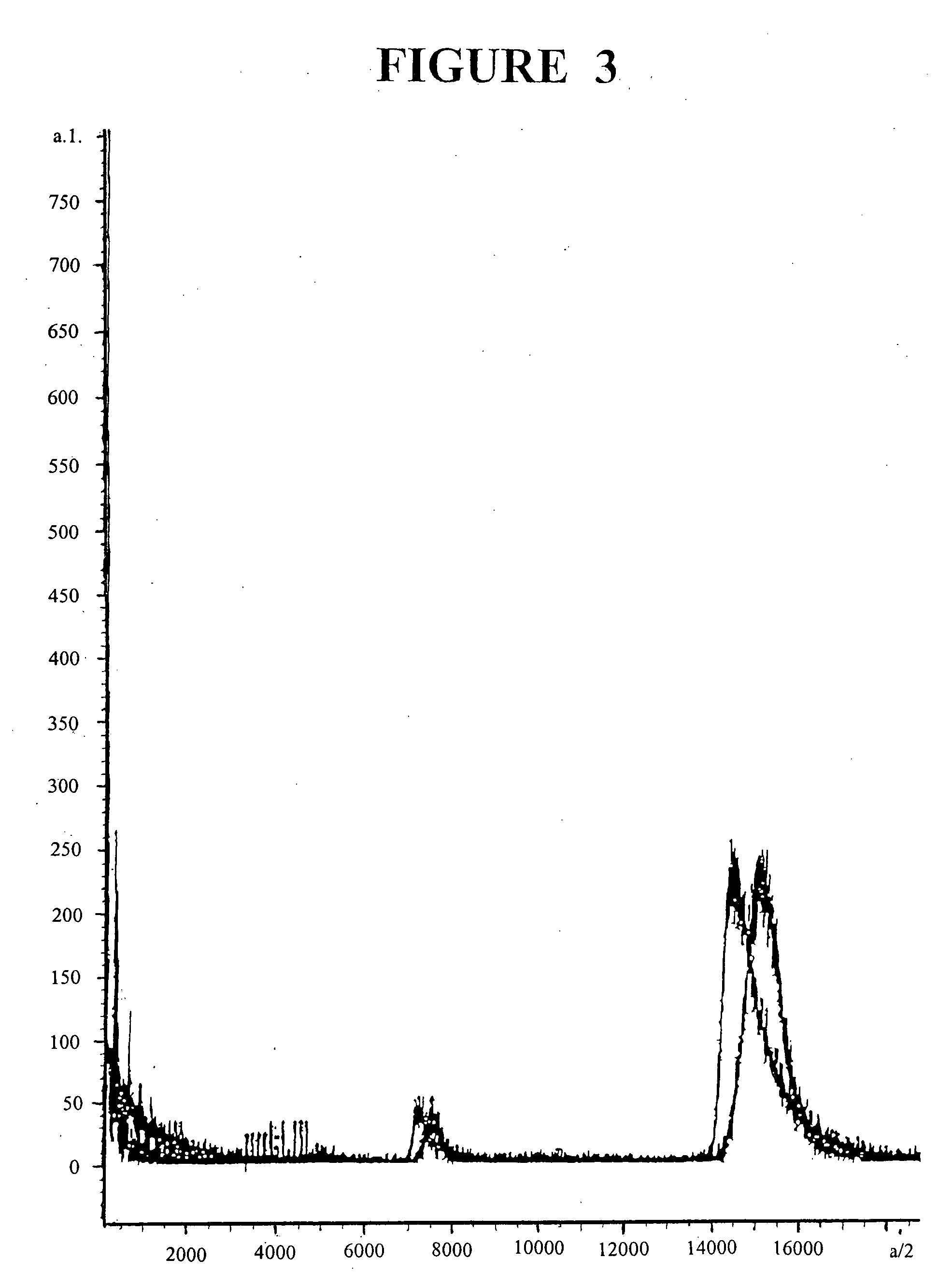Artificial lipoprotein carrier system for bioactive materials
a bioactive material and carrier system technology, applied in the direction of emulsion delivery, medical preparations, pharmaceutical delivery mechanisms, etc., can solve the problems of many drugs that cannot be administered orally or parenterally, side effects, and difficulty in achieving a desired effect, so as to enhance the amount of drugs, and enhance the effect of drug entrapmen
- Summary
- Abstract
- Description
- Claims
- Application Information
AI Technical Summary
Benefits of technology
Problems solved by technology
Method used
Image
Examples
example 1
Lipoprotein-Resembling Phospholipid-submicron Emulsion for Cholesterol-Based Drug Targeting, BCH
[0074] The objective of this experiment was to develop and evaluate lipoprotein-resembling phospholipid-submicron emulsion (PSME) as a carrier system for new cholesterol-based compounds for targeted delivery to cancer cells. BCH, a boronated cholesterol compound for boron neutron capture therapy (BNCT), was originally developed in our laboratory to mimic the cholesterol esters present in the LDL and to follow a similar pathway of cholesterol transport into the rapidly dividing cancer cells. The lipoprotein-resembling system was designed to solubilize and facilitate BCH delivery to cancer cells. BCH-containing PSME was prepared by sonication. Stock solutions of individual lipid and BCH were prepared in chloroform. Various lipids and BCH were mixed and the mixture was composed of the following ratio (w / w): Triolein: egg phosphatidylcholine: lysophosphatidylcholine: cholesterol oleate: chole...
example 2
BCH Distribution into Human LDL and Uptake by Human Glioma Cells 767SF
[0081] The purpose of this experiment was to study the efficiency of delivering newly synthesized boronated cholesterol, BCH, for boron neutron capture therapy to human glioma cells 767 SF. The drug was incorporated in a lipoprotein-resembling submicron emulsion to benefit from the increased uptake of the cholesterol in these cells due to the increased demand of the building new cell membrane for these rapidly dividing cancer cells. Also the similarity in structure between these BCH-containing submicron emulsion and native lipoproteins may contribute the dynamic exchange and transfer of lipid between different lipoproteins in the body and consequently the transfer of the boronated cholesterol to the cancer cells.
[0082] Methods: BCH-containing submicron emulsion was prepared by sonication at 55.degree. C. of various lipids, the natural component of native lipoproteins, along with the boronated cholesterol. In vitro...
example 3
Amphotericin B Incorporation in Lipoprotein-resembling Submicron Emulsion
[0084] Stock solutions of individual lipid were prepared in chloroform; Amphotericin B (AmpB) was dissolved in methanol. Various lipids and AmpB were mixed and the mixture was composed of the following in mg: Triolein: egg phosphatidylcholine: lysophosphatidylcholine: cholesterol oleate: cholesterol: AmpB, 70: 22.7: 2.3: 3.0: 2.0: 10, respectively. All components were combined and chloroform / methanol was evaporated under a stream of nitrogen. The preparation was then desiccated overnight at 4.degree. C. to remove residual solvent. Following addition of 10 ml of 2.4 M NaCl for 110 mg of lipid and AmpB mixture, the preparation was sonicated under nitrogen for 30 min using a probe sonicator (Branson Sonifier 450) at output 5, while the temperature was maintained at 55.degree. C. Particles were separated and dialyzed as described before. AmpB was analyzed by spectrophotometry after suitable dilution in methanol at ...
PUM
 Login to View More
Login to View More Abstract
Description
Claims
Application Information
 Login to View More
Login to View More - R&D
- Intellectual Property
- Life Sciences
- Materials
- Tech Scout
- Unparalleled Data Quality
- Higher Quality Content
- 60% Fewer Hallucinations
Browse by: Latest US Patents, China's latest patents, Technical Efficacy Thesaurus, Application Domain, Technology Topic, Popular Technical Reports.
© 2025 PatSnap. All rights reserved.Legal|Privacy policy|Modern Slavery Act Transparency Statement|Sitemap|About US| Contact US: help@patsnap.com



